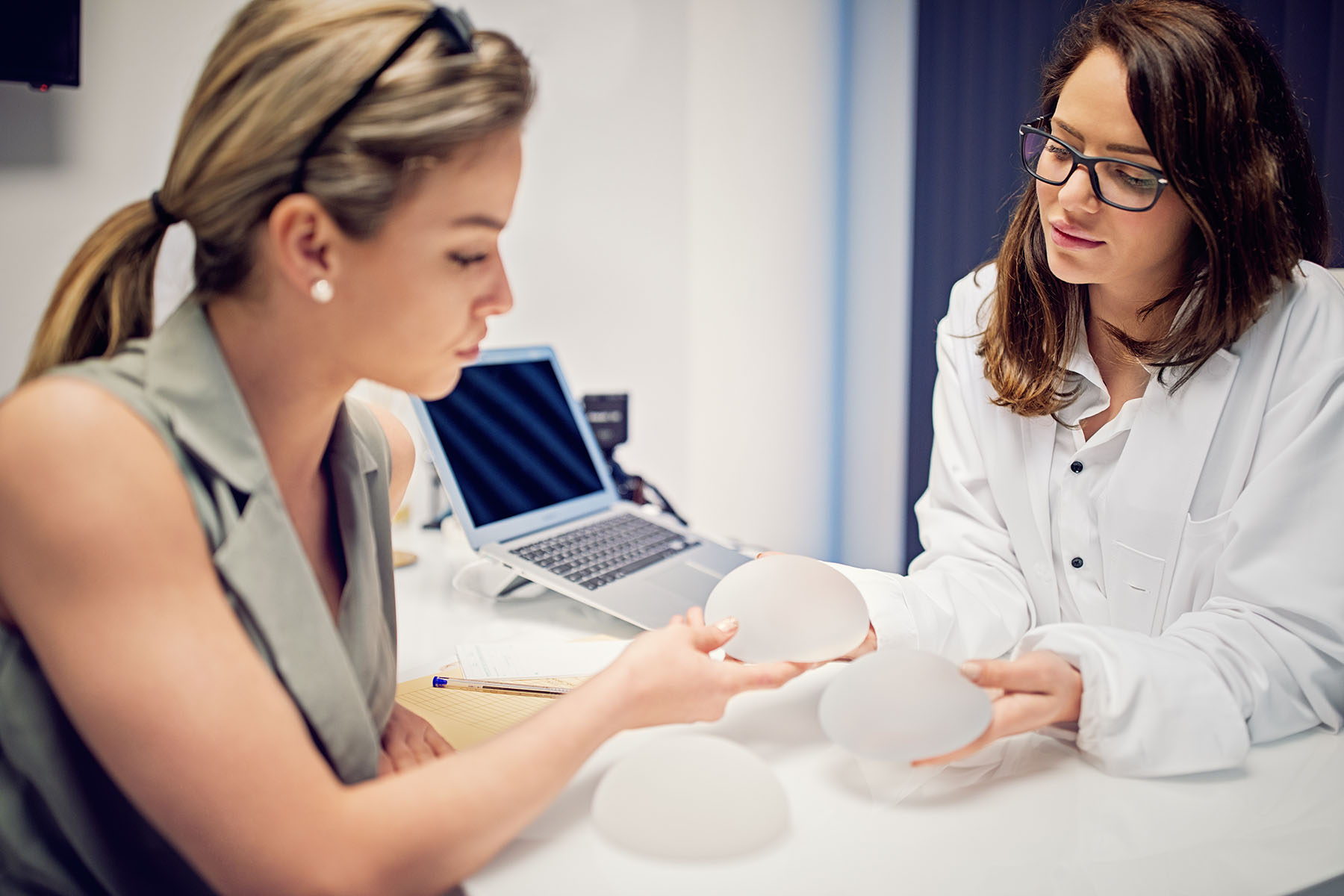Breast Implants: What Are the Risks?

Some headlines claim breast implants cause cancer. But – not so fast.
Research studies have concluded that breast implants do not increase the risk of breast cancer. Unfortunately, that’s not the end of the story.
After an intensive review, the Food and Drug Administration (FDA) announced that women with breast implants “may have a very small, but increased risk of developing anaplastic large cell lymphoma, or ALCL.” Because of this association, the disease is sometimes referred to as breast implant-associated anaplastic large cell lymphoma (BIA-ALCL). BIA-ALCL is not a cancer of the breast tissue.
This potential increased risk was found primarily in women with textured breast implants, which are silicone or saline implants designed with a rougher surface to help keep them in place.
When breast implants are surgically placed in the body, they are inserted behind breast tissue or under chest muscle.
Eventually, scarring develops around the implant, which can separate it from the rest of the breast. In most ALCL cases, the lymphoma was found near the implant, within the fibrous scar “capsule”.
“That’s why there’s been a shift in how most plastic surgeons practice,” explains Dr. Wrood Kassira, a plastic surgery expert who works with oncologists from Sylvester Comprehensive Cancer Center and performs breast augmentation and reconstruction procedures. “Most surgeons, including myself, no longer use textured implants because of this rare risk. While the textured implants were sometimes preferred because of their teardrop shape, patients still get aesthetically pleasing results with smooth, round implants — without the additional risk.”
Am I going to get ALCL?
Probably not. ALCL is an extremely rare type of non-Hodgkin lymphoma, and the risk of developing it is very low, even for those with breast implants. While breast implants are the most common type of plastic surgery in the United States, the FDA last reported (in 2017) that there are only 414 known cases of ALCL and nine related deaths. However, that is 55 more cases than were reported in 2016.
“To diagnose these cases, fluid needs to be aspirated to check for ALCL,” Dr. Kassira explains. “It’s typically caught early enough and responds well to treatment, which includes removing the implant and the pocket or capsule and sometimes requires radiation or chemotherapy.”
If you develop BIA-ALCL, it may appear years after your breast implant surgery as a lump, pain, swelling, or fluid collected near the implant. Or it may alter the symmetry of your breasts years after your implant surgery. If you notice any such changes in either or both of your breasts, seek a professional evaluation.
Other risks of breast augmentation
“I tell patients and those considering breast implants that these are not lifetime devices,” says Dr. Kassira.
“Breasts change with time and with age. Most breast implant patients have three related surgeries over the course of their lifetime to remove ruptured implants, correct malposition of the implants, address complications of surgery, replace the original implants with a different size or shape or remove them.”
The FDA recommends that silicone breast implant patients get an MRI three years after the initial surgery. Then, every two years thereafter to rule out a silent leak, which may not be detectable during a physical exam.
There is also a risk of developing capsular contracture, a common condition for breast implant patients, where there is a tightening of the tissue around the breast implant that may be painful and affect the appearance of the breast.
“I advise patients to carefully consider all the information before committing to breast implants,” says Dr. Kassira. “Those who fully understand what they’re getting into can be very satisfied with the results.”
The best monitor of your breast health? You.
Experts recommend monthly self-exams so you can more effectively notice any changes in your breasts. Having breast implants makes natural breast tissue more challenging to see on standard mammograms. But your doctor can request a breast MRI, which is considered the gold standard in evaluating silicone breast implants for possible rupture. Enhanced X-ray pictures called implant displacement views can offer a more complete picture of your breast tissue.
No symptoms? If you have breast implants and don’t experience any of these signs or symptoms, the FDA does not advise having your breast implants removed as a preventive measure.
Dana Kantrowitz is a contributing writer for UMiami Health News.
Tags: breast augmentation, breast cancer, breast cancer care in Miami, breast implants, Dr. Wrood Kassira, lymphoma breast implant-associated anaplastic large cell lymphoma, plastic surgery
